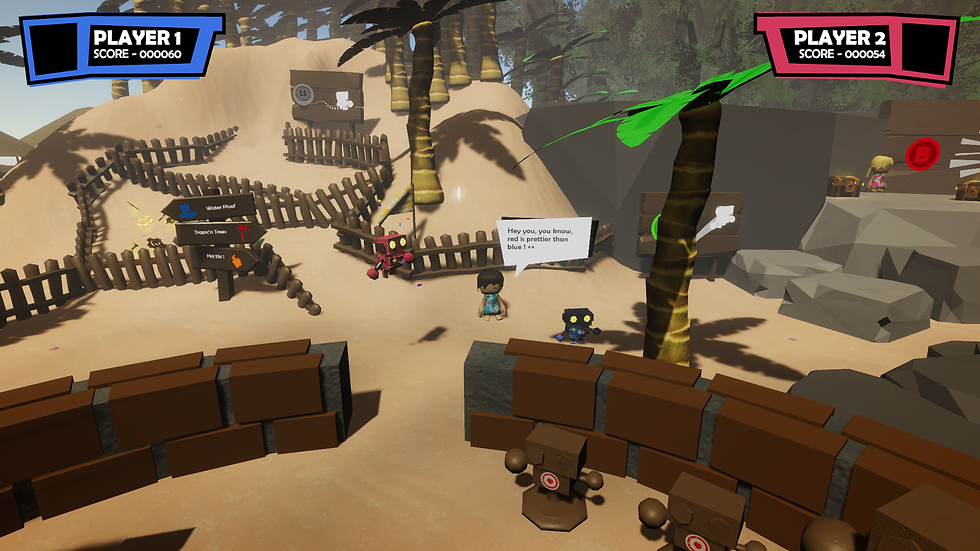
“Aliens are attacking Hawaii! You and your robot friend are the archipelago’s last stand!”
Working conditions
Groupe project (1 Game designer + 1 Game programming/Artist/designer)
We designed the game right after 2020’s health crisis and the lockdown, out of school’s context. We used agile and scrum-based methods (the “MVP” version of the game was out after a couple of days).
I wanted to experience the design process of a new kind of game, having the 2.5D constraint. At the very start, we agreed on a duration of a month and ½ to build a solid basis and several levels to test it.
Being the one of us not having too much problem with assets creation, I designed 3D and 2D assets for the game as well as C# programming, as I also wanted to improve my programming skills. We did all the research and the global Game design together and we both created levels related.
Project
The initial intentions of the game were based on cooperation between 2 players in a game for casual gamers. Regarding our audience, we decided to simplify as much as possible the controls and the actions to allow the players to have a quick hands-on experience (the village “hub” let the players discover and experience the mechanics and the associated control in an easy way).
Through Level design, we were looking forward a specific saw-tooth rhythm switching between fighting and platforming (acting as a breathing/circulation area). We also added an event system, giving various intermediate objectives (ex: kill 5 enemies, don’t get hit, don’t die, etc.) to the player in defined zones.

Design 3D global

Design, rigging et animation de l'avatar des joueurs

Maillage low poly de l'interrupteur

Design 3D global
Design documents
In terms of Game design, we created several documents:
- a One Page Document, summarizing and presenting the game
- a Gameloops Document, presenting gameplay loops (goal/challenge/reward)
- a 3C Document, presenting the camera, the character and the controls
- a Rational Level Design Document, allowing to analyse and balance the diffrent levels
- a Debug Document, allowing to give QA information to programmers
- a Features List, presenting the game's features
- a Stucture Document, summarizing Game design's structure
- an Intention Document, presenting the initial intentions
Softwares
Modeling/Animation
Integration
C# scripting
Level design
Assets design
Documents design
Documents design
Documents design
Project management
Versionning








